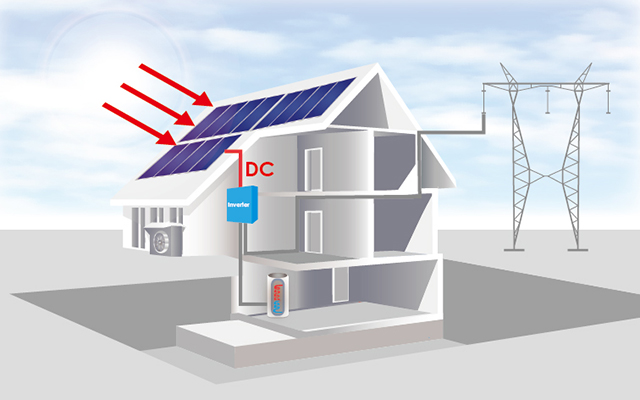The connection of solar panels, also known as photovoltaic (PV) modules, involves configuring them into a solar array to generate electricity efficiently. There are two main types of connections for solar panels: series connection and parallel connection. These connection principles are used to achieve the desired voltage and current levels for a given solar power system.
- Series Connection:
- In a series connection, the positive terminal of one solar panel is connected to the negative terminal of the adjacent panel, and so on. This creates a chain or series of panels. The voltage of each panel adds up, while the current remains constant. The total voltage of the series-connected panels is the sum of the individual panel voltages.
- The formula for calculating the total voltage (V_total) in a series connection is: Vtotal=V1+V2+V3+… where V1,V2,V3,… are the voltages of individual panels.
- Series connections are often used to increase the overall voltage of the solar array. However, it’s important to note that if one panel in the series is shaded or has reduced performance, it can impact the output of the entire series.
- Parallel Connection:
- In a parallel connection, all the positive terminals of the solar panels are connected together, and all the negative terminals are connected together. This results in an array where the voltage remains constant, but the total current is the sum of the currents from individual panels.
- The formula for calculating the total current (I_total) in a parallel connection is: Itotal=I1+I2+I3+… where I1,I2,I3,… are the currents of individual panels.
- Parallel connections are often used to increase the overall current capacity of the solar array. If one panel in a parallel configuration is shaded or underperforms, it has less impact on the output of the entire array compared to a series configuration.
- Series-Parallel Combination:
- Solar arrays can also be created using a combination of series and parallel connections. This allows for both an increase in voltage and current. For example, several series-connected strings of panels can be connected in parallel.
- The overall design of the solar array, including the arrangement of series and parallel connections, depends on factors such as the electrical requirements of the inverter, shading conditions, and the overall system design goals.
The choice between series and parallel connections, or a combination of both, depends on the specific requirements of the solar power system, the inverters used, and the site conditions. System designers carefully consider these factors to optimize the performance and efficiency of the solar array.


